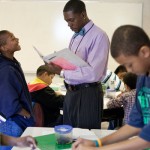Stay up to date on news, events and special features.
Food For Fines returns October 17 – 31
 For the ninth consecutive year, UBC Library and the Alma Mater Student Society of UBC are once again running their Food for Fines Campaign.
For the ninth consecutive year, UBC Library and the Alma Mater Student Society of UBC are once again running their Food for Fines Campaign.
Reduce your library fines by donating non-perishable food items. Each food item donated counts toward $2 in fines, up to a maximum of $30. Donated items will be distributed to the Greater Vancouver Food Bank and the AMS Food Bank. The program takes place from October 17 – 31 inclusive.
Help us raise exceed our goal of raising more than $5,000 in donations to helping those who need it the most in our communities. Review the list of most-needed items by the Food Banks. Find out more about this program by visiting the Food for Fines Facebook page or emailing the AMS Food Bank.
Donations received at UBC’s Okanagan campus will go to the UBC Okanagan Student Food Bank.
By Jessica Woolman on October 3, 2011 For original link click here
Wi-Fi service coming to Vancouver schools
 The Vancouver School District plans to start installing wireless internet service in some schools, despite a warning by the World Health Organization that the signals could be a possible carcinogen.
The Vancouver School District plans to start installing wireless internet service in some schools, despite a warning by the World Health Organization that the signals could be a possible carcinogen.
School Board Chair Patti Bacchus said the service is being installed because the district is out of step with an educational technology that is increasingly conducted online and with students armed with laptops and smartphones.
“We’re looking at making sure that there is a reasonable access to Wi-Fi so that we can enable students to access all of those educational resources,” said Bacchus.
The initial focus will be on secondary schools Bacchus says, but a request for proposals issued last month shows the school district is seeking a contractor to provide service for 100 sites.
Higher Learning Shifts West
In a fresh sign that Canada’s power balance is shifting ever more West, universities in Alberta and British Columbia are outperforming those in Ontario as academia is lured to newer universities that have richer grants and more up-and-coming research stars.
“The intellectual centre of gravity of Canada is shifting west much faster than people realize,” said Alex Usher, president of Higher Education Strategy Associates.
His Toronto-based firm specializes in providing measurement systems, data collection and strategic development to a range of players in the post-secondary field, including governments, colleges and universities, and non-governmental organizations.
Despite investments from Dalton McGuinty’s Liberal government — which was responsible for, in Mr. Usher’s opinion, arguably the best years in Ontario in terms of new funding for higher education — the province has been slipping behind Alberta and British Columbia for two decades.
Click here to read the entire National Post article.
Seismic upgrades to Vancouver’s most vulnerable schools set at $618 million
Seismic upgrades to 48 of the city of Vancouver’s most vulnerable schools will cost $618 million, about 40 per cent of the amount budgeted for the entire province, according to a consultant’s report released Wednesday.
The B.C. Ministry of Education, which largely financed the report, announced $1.5 billion over 15 years in 2005 to seismically upgrade more than 700 of the province’s schools.
The $618 million would cover bare-bones seismic upgrades. But Vancouver Board of Education chairwoman Patti Bacchus said many schools require major renovations that should be done at the same time, which means her district would need more than $1 billion on its own.
B.C. Education Minister George Abbott did not say whether more funding would be forthcoming, but said the province is making “good progress” on its 15-year pledge to seismically upgrade B.C.’s at-risk schools.
“In the near future, the ministry intends to bring forward the next phase of the school seismic mitigation program,” he said in a statement on Wednesday.
Vancouver has the most at-risk buildings of any school district and has already spent several hundred million dollars on completed or current projects, Bacchus said. The cost of upgrading or replacing schools that have already been completed or approved is not included in the report, which was prepared for the Vancouver school board by Coriolis Consulting.
The 48 schools identified in the report have structures that are considered by consultants to be high risk in the event of a “significant seismic event.” That means those buildings could sustain “widespread damage,” or “structural failure” in the event of a major earthquake in the region, according to the report. The report offers three options for each of the 48 vulnerable schools, including seismic upgrades only, seismic upgrades combined with general facility upgrades, or replacement.
To read the entire Vancouver Sun article, click here.
Do the best students make the best teachers?
 The idea behind the North Carolina Teaching Fellows Program is simple: the state pays top academic students to attend a public college, and in return they spend at least four years teaching in a public school. In the 20 years since the first fellows began teaching, the program has flourished. High school seniors selected for the program average about 1,200 on the SATs compared with a state average of 1,000. Of the 500 fellows chosen each year, about a quarter are black or Hispanic.
The idea behind the North Carolina Teaching Fellows Program is simple: the state pays top academic students to attend a public college, and in return they spend at least four years teaching in a public school. In the 20 years since the first fellows began teaching, the program has flourished. High school seniors selected for the program average about 1,200 on the SATs compared with a state average of 1,000. Of the 500 fellows chosen each year, about a quarter are black or Hispanic.
It is not enough for the smartest to become teachers; they have to stay teaching. Research has shown that experienced teachers perform far better than beginners. A Carolina Institute for Public Policy study by Gary T. Henry, Charles Thompson and Kevin Bastian in 2010 found that of a dozen training programs in the state, Teach for America had the best test results, with the Teaching Fellows Program second. There is, however, a large difference in retention. Teach for American requires only a two-year commitment. After five years, 7 percent of the Teach for America participants were still at work in North Carolina, versus 73 percent of the fellows. Sixty percent of the fellows who started teaching 20 years ago still work in North Carolina public schools.
This article features John Williams III, a fifth grade teacher in Durham. To read the full New York Times Education article, please click here.